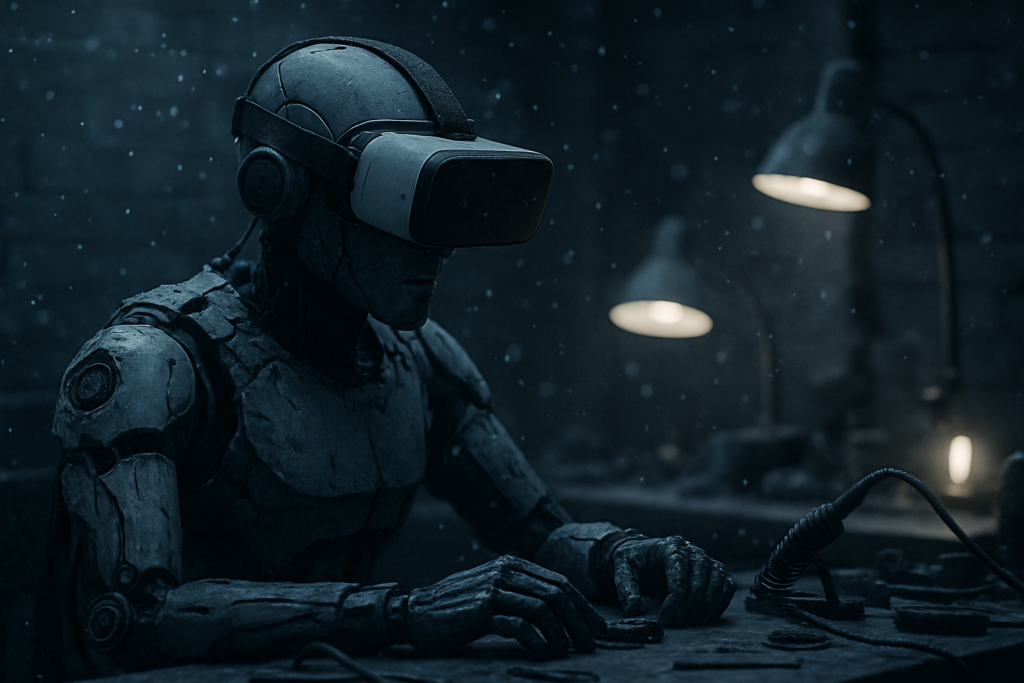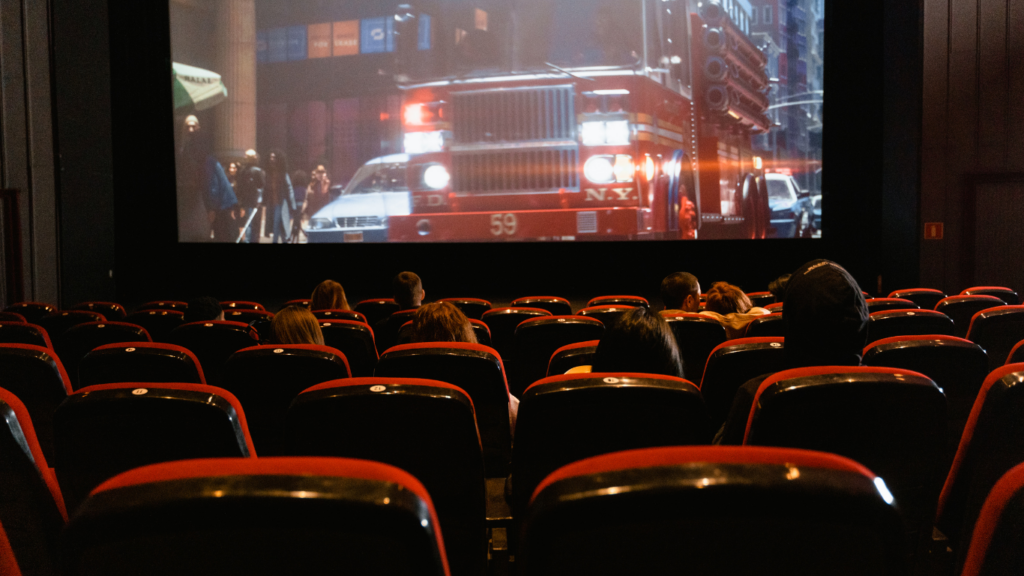Immersive experiences have revolutionized the way we perceive and interact with the world around us. As a passionate advocate for cultural preservation and education, I’ve witnessed firsthand the transformative power of Virtual Reality (VR) in safeguarding our heritage and enhancing learning opportunities.
VR technology transcends physical boundaries, offering a gateway to explore ancient civilizations, historical landmarks, and traditional practices in ways never thought possible.
In my exploration of VR’s role in cultural preservation and education, I’ve uncovered a dynamic fusion of innovation and tradition. Through VR simulations, users can step into the shoes of ancestors, walk through virtual museums, and partake in immersive storytelling that brings history to life.
Join me on a journey where cutting-edge technology meets the richness of our cultural tapestry, unlocking new avenues for preservation, education, and appreciation of our shared heritage.
Overview of VR Technology
Exploring Virtual Reality (VR) technology in the realm of cultural preservation and education reveals its immersive capabilities that bridge the past with the present. VR applications enable users to delve into ancient civilizations, experience historical landmarks, and partake in traditional practices as if transported through time.
This fusion of innovation and tradition within VR simulations offers a unique avenue for individuals to engage with history firsthand, fostering an appreciation for shared heritage via interactive storytelling.
Importance of Cultural Preservation
Preserving our cultural heritage is crucial for maintaining our identity and understanding where we come from. It shapes our values and traditions, connecting us to our roots. Cultural preservation contributes to a sense of belonging and helps future generations appreciate the richness of our diverse heritage.
Challenges in Cultural Preservation
Ensuring the preservation of cultural artifacts and traditions faces various challenges. One major obstacle is the threat of natural disasters such as earthquakes or floods that can destroy priceless heritage sites. Additionally, the lack of funding and resources for preservation efforts often hinders the conservation of historical landmarks and artifacts.
Moreover, the rapid pace of globalization and modernization can lead to the erosion of cultural practices and traditions, further emphasizing the need for proactive cultural preservation measures.
VR Applications in Cultural Education
Exploring Virtual Reality’s (VR) applications in cultural education opens up exciting possibilities to engage learners and immerse them in diverse cultural experiences. VR technology offers a dynamic platform for students to explore historical landmarks, ancient artifacts, and traditional practices in a way that traditional education methods cannot match.
Enhancing Learning Experiences
- Interactive Learning: VR allows students to engage with 3D models of artifacts and virtually visit historical sites, leading to a more engaging and immersive educational experience.
- Deeper Cultural Understanding: By exploring virtual simulations, students can gain a richer and more nuanced understanding of different cultures and historical contexts.
Access to Remote Locations
VR technology allows students to access remote cultural sites or museums that may be geographically challenging to visit in person. Through VR simulations, learners can explore the Pyramids of Giza in Egypt or the Great Wall of China, experiencing these cultural wonders without leaving the classroom.
Cultural Sensitivity and Understanding
VR applications can help foster cultural sensitivity and understanding by allowing students to walk in the shoes of people from diverse cultures. By virtually participating in cultural ceremonies or rituals, learners can develop empathy and appreciation for the diversity of human customs and traditions.
Interactive Language Learning
Immersive VR environments can facilitate interactive language learning experiences by placing students in culturally relevant scenarios. Learners can practice language skills in realistic settings, such as ordering food in a virtual restaurant or engaging in conversations with virtual native speakers.
Preservation of Intangible Heritage
VR technology contributes to the preservation of intangible cultural heritage by documenting disappearing traditions and practices. Through immersive VR experiences, future generations can learn about traditional dances, music, or folklore that might otherwise be lost to modernization.
Incorporating Virtual Reality into cultural education not only enriches learning experiences but also fosters a greater appreciation for the rich tapestry of global cultures. By leveraging VR technology, educators can inspire curiosity, empathy, and cultural awareness in students, enabling them to become global citizens with a deep respect for cultural diversity.
Case Studies of VR in Cultural Preservation
In discussing the practical applications of Virtual Reality (VR) in cultural preservation, I’d like to highlight a few case studies that demonstrate how this technology is actively contributing to the safeguarding and dissemination of cultural heritage.
1. Ancient Ruins Reconstruction
One compelling application of VR in cultural preservation is the reconstruction of ancient ruins. By utilizing VR technology, archaeologists and historians can digitally recreate ancient sites in their original form, allowing individuals to explore them in immersive virtual environments.
For example, the Digital Karnak project reconstructs the Karnak Temple complex in Egypt, providing users with a realistic and interactive experience of this ancient architectural marvel.
2. Museum Exhibits Enhancement
VR has also been instrumental in enhancing museum exhibits and making cultural artifacts more accessible to the public. Institutions like the British Museum have integrated VR into their exhibits to offer visitors a virtual tour of galleries and exhibitions.
This approach not only broadens the audience reach but also enables individuals from different parts of the world to engage with cultural artifacts without physical travel.
3. Cultural Heritage Documentation
Moreover, VR plays a crucial role in the documentation of cultural heritage sites and artifacts. Projects like CyArk leverage VR technology to create digital records of at-risk heritage sites around the globe. By capturing detailed 3D scans of structures and objects, CyArk ensures that even if physical sites are damaged or destroyed, their digital replicas can aid in their preservation and reconstruction.
4. Indigenous Knowledge Preservation
In the realm of indigenous cultural preservation, VR has emerged as a valuable tool for documenting and sharing traditional knowledge. The Indigenous Digital Archive, for instance, collaborates with indigenous communities to create VR experiences that preserve oral histories, rituals, and practices. By digitizing and immortalizing these cultural expressions, VR empowers indigenous groups to safeguard their heritage for future generations.
5. Language Revitalization Initiatives
Lastly, VR is being harnessed in language revitalization efforts to preserve endangered languages and dialects. Projects like the Living Tongues Institute’s Virtual Indigenous Language Environment (VILE) use VR simulations to immerse learners in linguistic contexts, fostering language acquisition and preservation.
This innovative approach not only facilitates language learning but also revitalizes and sustains linguistic diversity.
These diverse case studies illustrate the versatility and impact of VR in cultural preservation, underscoring its potential to revolutionize the way we safeguard, share, and experience cultural heritage.
Future Implications and Innovations
Exploring the realm of Virtual Reality (VR) reveals a promising landscape for future cultural preservation and educational endeavors. The evolution of VR technology continues to push boundaries, offering innovative solutions to age-old challenges in safeguarding and disseminating cultural heritage.
As I delve into the future implications and innovations of VR in this context, it is evident that this immersive technology holds immense potential to reshape the way we perceive, protect, and pass on our collective heritage.
In the coming years, advancements in VR are poised to revolutionize the field of cultural preservation by enabling even more detailed and interactive experiences. Imagine a world where archaeological sites from across the globe can be explored in virtual space, allowing individuals to walk through ancient temples, interact with historical artifacts, and witness bygone civilizations firsthand.
VR not only preserves these sites in their current state but also has the capability to recreate them as they once stood, providing a glimpse into history like never before.
Moreover, the integration of Artificial Intelligence (AI) and VR technology promises to enhance cultural preservation efforts by automating the process of reconstructing and restoring deteriorating artifacts and structures.
By harnessing the power of AI algorithms, VR applications can meticulously recreate lost elements of cultural heritage, ensuring that future generations have access to a more complete and accurate representation of the past.
In the realm of education, VR is set to redefine the traditional classroom experience by transporting students to different eras and cultures through immersive simulations. Imagine learning about the ancient civilizations of Egypt or Mesopotamia not from textbooks but by virtually exploring their monuments, customs, and daily life.
This hands-on approach to learning fosters a deeper understanding and appreciation for diverse cultures, fostering empathy and cross-cultural awareness among students.
As VR technology becomes more accessible and sophisticated, we can expect to see a surge in collaborative projects that bring together experts from various fields to create immersive cultural experiences. From multimedia exhibitions that blend VR with haptic feedback to interactive storytelling experiences that blur the lines between fiction and reality, the possibilities are endless.
By embracing these innovations and pushing the boundaries of what is possible, we pave the way for a future where cultural preservation and education are not just preserved but celebrated in all their richness and diversity.
The future implications and innovations of VR in cultural preservation and education hold the promise of a more connected, informed, and culturally aware society. By leveraging the power of VR technology, we have the opportunity to break down barriers, transcend borders, and unite people through the shared experience of exploring our collective heritage in ways never before imagined. The future is bright, and with VR leading the way, the possibilities are truly boundless.



